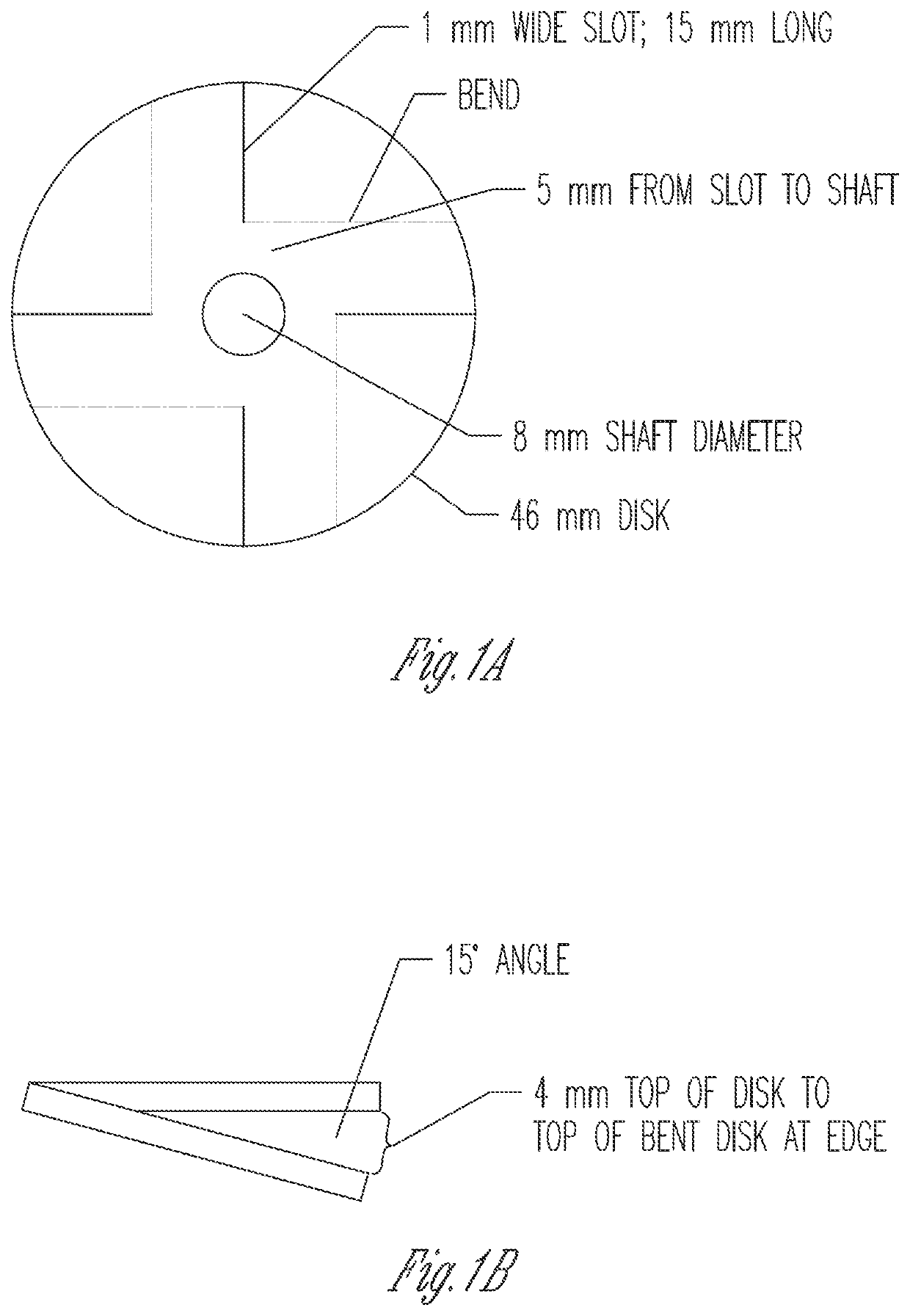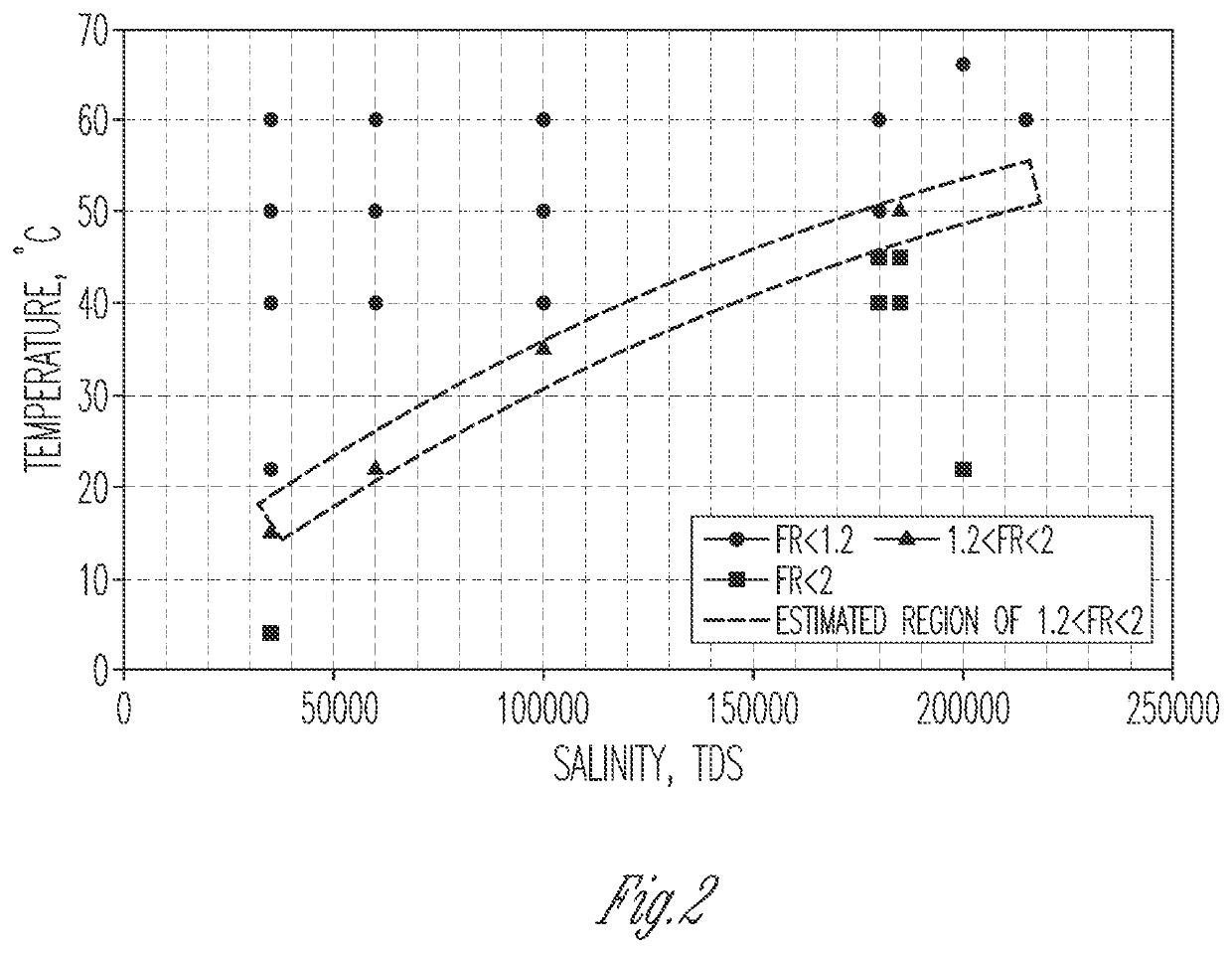Refined beta-glucan and methods of maintaining filterability of beta-glucan compositions at various salinities
- Summary
- Abstract
- Description
- Claims
- Application Information
AI Technical Summary
Benefits of technology
Problems solved by technology
Method used
Image
Examples
examples
[0067]Various aspects of the present invention can be better understood by reference to the following Examples which are offered by way of illustration. The present invention is not limited to the Examples given herein.
[0068]The term “ambient conditions” as used in the Examples refers to about 18° C. to about 22° C. and about 96 kPa to about 103 kPa. All Examples were performed under ambient conditions unless otherwise indicated.
[0069]Part I. Beta-Glucan Preparation.
example i-1
Preparation from Commercial Material
[0070]Using a 5000 liter jacketed vessel with moderate agitation, 7 g / L of commercial Actigum® CS6 from Cargill (crude powder blend of scleroglucan and sclerotium rolfsii organism powder) was added to 2400 liters of 11.8° C. water and mixed for 1 hour. After an hour of mixing, the vessel was heated to 85° C. and left under agitation for 12 hours without temperature control. After 12 hours the temperature was 41.3° C. and the vessel was reheated to 80° C. and passed through a Guerin homogenizer at 200 bar of pressure and 300 L / hr.
[0071]The homogenized mixture was cooled to 50° C. 4 g / L of CaCl2*2H2O was added. pH was reduced to 1.81 using 20% HCl. This mixture was agitated for 30 minutes to enable precipitation of oxalic acid (i.e., as the calcium salt thereof, calcium oxalate).
[0072]After maturation, the solution was adjusted back to 5.62 pH using 10% Na2CO3 and heated to 85° C. and left under agitation without temperature control for 14 hours, th...
example ii-1
y Ratio at Various Temperatures and Salinities
[0087]Sample 1 from Part I was used to generate aqueous solutions having a concentration of beta-glucan of 1 g / L and having various salinities. The solutions had a pH of 7. The brines used to form the solutions had compositions that mirrored the ratio of divalent ions in sea salt (the 35 g / L TDS included 1.7 g / L divalent ions, and the 60, 100, 200, and 213 g / L TDS brines had the same proportion of divalent ions) except the 180 g / L TDS brine used 17.67 g / L divalent ions and the 184 g / L TDS used 16.4 g / L divalent ions.
[0088]The Filterability Ratios of the aqueous solutions was tested at various temperatures. The results are given in FIG. 2, with circles indicating a filterability ratio of less than 1.2, triangles indicating a filterability ratio of greater than 1.2 and less than 2, and with crosses indicating a filterability ratio of 2 or more.
PUM
| Property | Measurement | Unit |
|---|---|---|
| Temperature | aaaaa | aaaaa |
| Temperature | aaaaa | aaaaa |
| Temperature | aaaaa | aaaaa |
Abstract
Description
Claims
Application Information
 Login to View More
Login to View More - R&D
- Intellectual Property
- Life Sciences
- Materials
- Tech Scout
- Unparalleled Data Quality
- Higher Quality Content
- 60% Fewer Hallucinations
Browse by: Latest US Patents, China's latest patents, Technical Efficacy Thesaurus, Application Domain, Technology Topic, Popular Technical Reports.
© 2025 PatSnap. All rights reserved.Legal|Privacy policy|Modern Slavery Act Transparency Statement|Sitemap|About US| Contact US: help@patsnap.com


